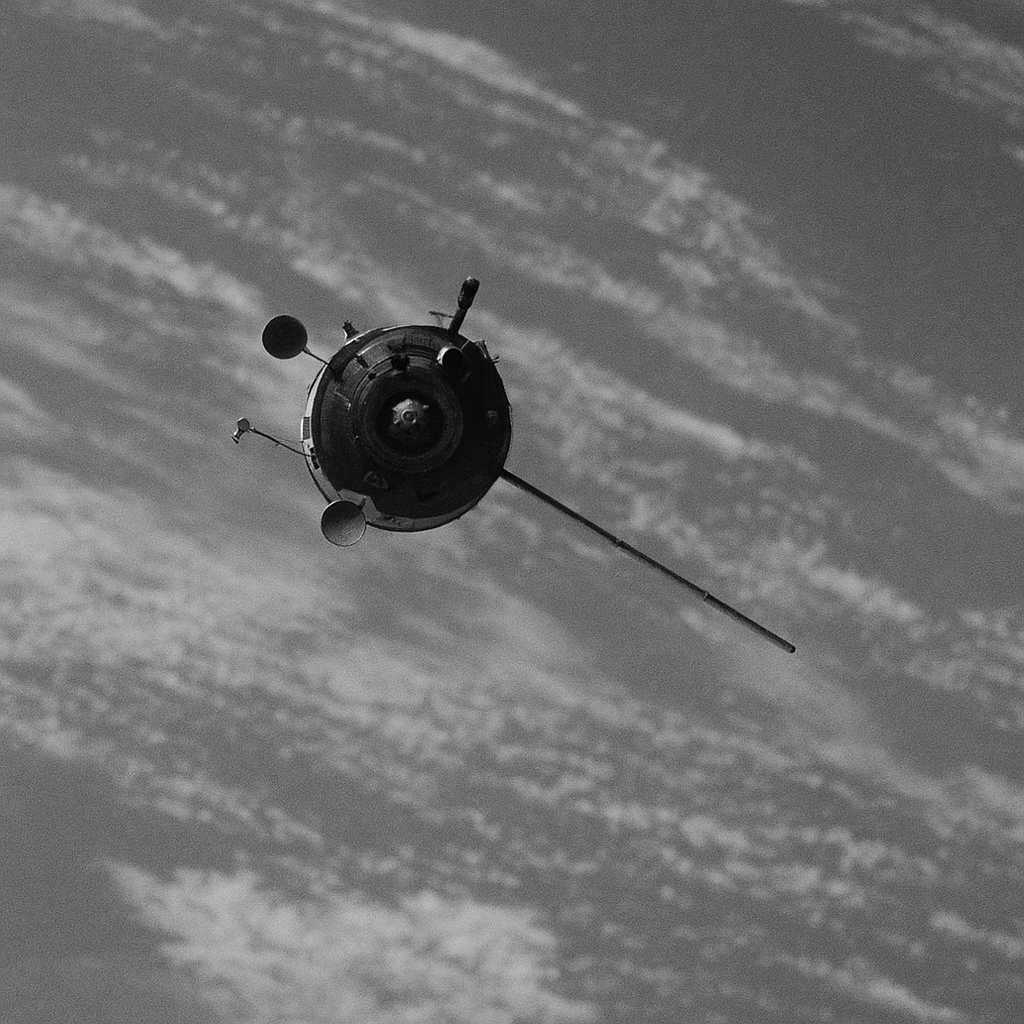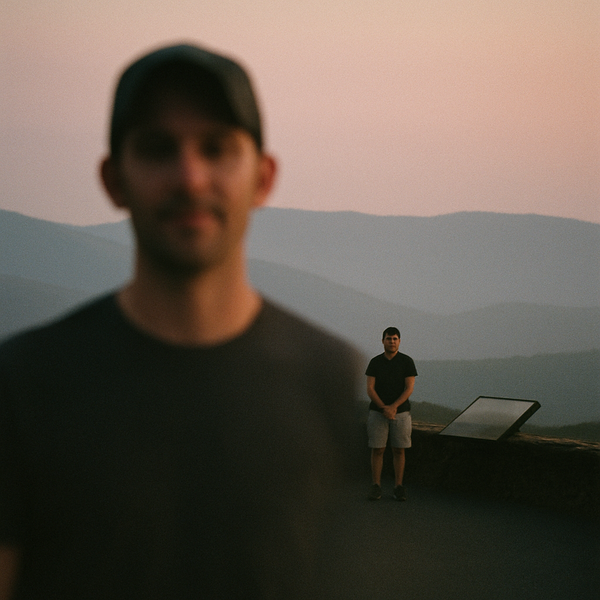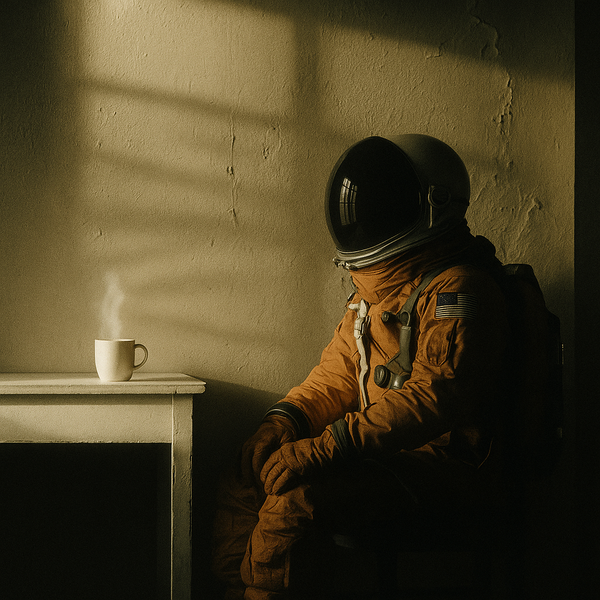Space Debris: The Hidden Cost of Our Cosmic Ambition

The mathematics of orbital mechanics are elegant—Kepler's laws describe perfect ellipses, Newton's equations predict trajectories with clockwork precision. But the reality above our heads resembles less a celestial ballet and more a high-speed demolition derby. Every satellite we launch, every rocket body we abandon, every fleck of paint that chips away becomes part of an increasingly chaotic system where beauty and danger intertwine at 17,500 miles per hour.
Consider this: removing just 50 pieces of space debris could reduce collision risk by a factor of ten. It's a number that seems almost absurdly small against the backdrop of over 130 million fragments currently tracked in orbit, yet it reveals something profound about the nature of complex systems. Like removing keystone species from an ecosystem or critical nodes from a network, targeting the right objects can cascade through the entire orbital environment.
The Architecture of Chaos
Space debris follows power laws—those mathematical relationships that govern everything from earthquake magnitudes to wealth distribution. A few massive objects pose disproportionate risk, while millions of tiny fragments create a background haze of danger. The European Space Agency's recent analysis suggests that five to ten large debris removals per year could stabilize the orbital environment, preventing what Donald Kessler predicted in 1978: a cascade of collisions rendering entire orbital regions unusable.
The Kessler Syndrome isn't science fiction anymore. In November 2024, the International Space Station executed an avoidance maneuver to dodge debris from a satellite that broke up in 2015. Each collision creates more fragments, each fragment increases collision probability—it's exponential growth in the most literal sense, compound interest working against us at orbital velocities.
What makes this particularly urgent is the acceleration of launch cadence. SpaceX alone conducted 134 launches in 2024, while new players like Blue Origin scale their operations. The recent discovery of Blue Origin debris in the Bahamas and SpaceX components in Europe reminds us that what goes up doesn't simply disappear—it either stays up as a permanent hazard or comes down unpredictably.
Engineering Elegance from Constraint
The technical challenges read like an innovator's fever dream. How do you capture a tumbling object that was never designed to be captured? How do you match velocities with debris spinning at different rates on multiple axes? Each solution requires innovations in computer vision, autonomous navigation, materials science, and propulsion. The Japanese startup Astroscale recently demonstrated magnetic capture technology, while the European Space Agency's ClearSpace-1 mission plans to use robotic arms—different approaches to the same fundamental problem of grabbing something that doesn't want to be grabbed.
Yet the real innovation isn't in any single technology but in the systems thinking required to make debris removal economically viable. The proposed focus on 50 high-risk objects represents this kind of strategic elegance: rather than trying to clean everything, identify the nodes whose removal prevents cascading failures. It's triage at orbital scale.
The Music of Spheres, Interrupted
There's a parallel here to Iannis Xenakis's stochastic music, where individual random events create emergent patterns. Each piece of debris follows deterministic orbital mechanics, yet the collective behavior becomes probabilistic, almost musical in its complexity. We can predict where a satellite will be in ten years with millimeter precision, but we can't say whether it will still be intact.
The recent incident in Kenya, where debris reportedly crashed into a village, transforms abstract risk into human consequence. These aren't just technical problems—they're questions about who bears the cost of our cosmic ambitions. When a Chinese rocket stage falls on a village or a piece of space station lands in someone's backyard, the mathematical beauty of orbital decay meets the messy reality of international liability.
Insurance companies are beginning to price in these risks, creating new economic pressures for responsible space operations. Insurers such as Lloyd’s of London have begun factoring the growing risk of orbital debris into their satellite policies — an indirect way of putting a price on how clean we keep space. It's market forces doing what regulations have struggled to accomplish: making sustainability profitable.
Interdisciplinary Harmonics
The solution to space debris won't come from aerospace engineers alone. It requires legal scholars to navigate the Outer Space Treaty's provisions on ownership and liability. It needs economists to design incentive structures that make cleanup profitable. It demands materials scientists to create satellites that safely deorbit at end-of-life. Most crucially, it requires artists and communicators to make the invisible visible—to help people understand that the empty space above us is actually a commons requiring active stewardship.
The proposed removal of 50 objects isn't just about reducing collision risk by a factor of ten. It's about demonstrating that we can reverse entropy in a system we've been making more chaotic for seven decades. Each successful capture and deorbit proves that cleanup is possible, that the Kessler Syndrome isn't inevitable, that we can engineer our way out of problems we've engineered ourselves into.
Composing the Future
Space debris represents a peculiar kind of tragedy of the commons—imagine the medieval town pasture, except the sheep are moving at orbital speeds. But within this challenge lies an opportunity to demonstrate humanity's capacity for collective problem-solving. The same species that created this orbital minefield can clean it up, but only through the kind of interdisciplinary collaboration that transforms individual expertise into collective wisdom.
The mathematics are clear: removing the right 50 objects could preserve orbital access for generations. The engineering is challenging but achievable: we have the technology to begin cleanup operations today. What remains is the harder task of aligning incentives, coordinating international efforts, and maintaining focus on a problem that remains invisible to most of humanity.
As we compose our future in space, we must remember that every launch decision, every mission design, every end-of-life plan becomes part of a larger symphony. We can either create harmony—sustainable practices that preserve orbits for future use—or cacophony—an ever-increasing din of debris that eventually drowns out all possibility of spaceflight. The choice, like the debris itself, is already in motion. The question is whether we'll act before the music stops.
References
- https://apnews.com/article/93871c98ca9c09a67219e238ed3e2eaa
- https://apnews.com/article/83577b82dcf68cc8eb2553415b2dcaa2
- https://arxiv.org/abs/2408.13552
- https://www.space.com/space-exploration/launches-spacecraft/falling-space-debris-is-a-growing-worry-for-aircraft-new-research-suggests
- https://www.cnn.com/2025/02/21/science/blue-origin-spacex-debris-bahamas-europe/index.html
- https://en.wikipedia.org/wiki/Kessler_syndrome
- https://news.mit.edu/2025/deploying-practical-solution-space-debris-0514
- https://www.cbsnews.com/news/space-debris-reportedly-crashes-village-kenya
- https://www.npr.org/2024/11/20/nx-s1-5196986/iss-dodge-debris
- https://www.bbc.com/news/articles/c9www02e49zo
- https://arstechnica.com/space/2025/10/everyone-but-china-has-pretty-much-stopped-littering-in-low-earth-orbit
Models used: claude-opus-4-1-20250805, gpt-image-1




